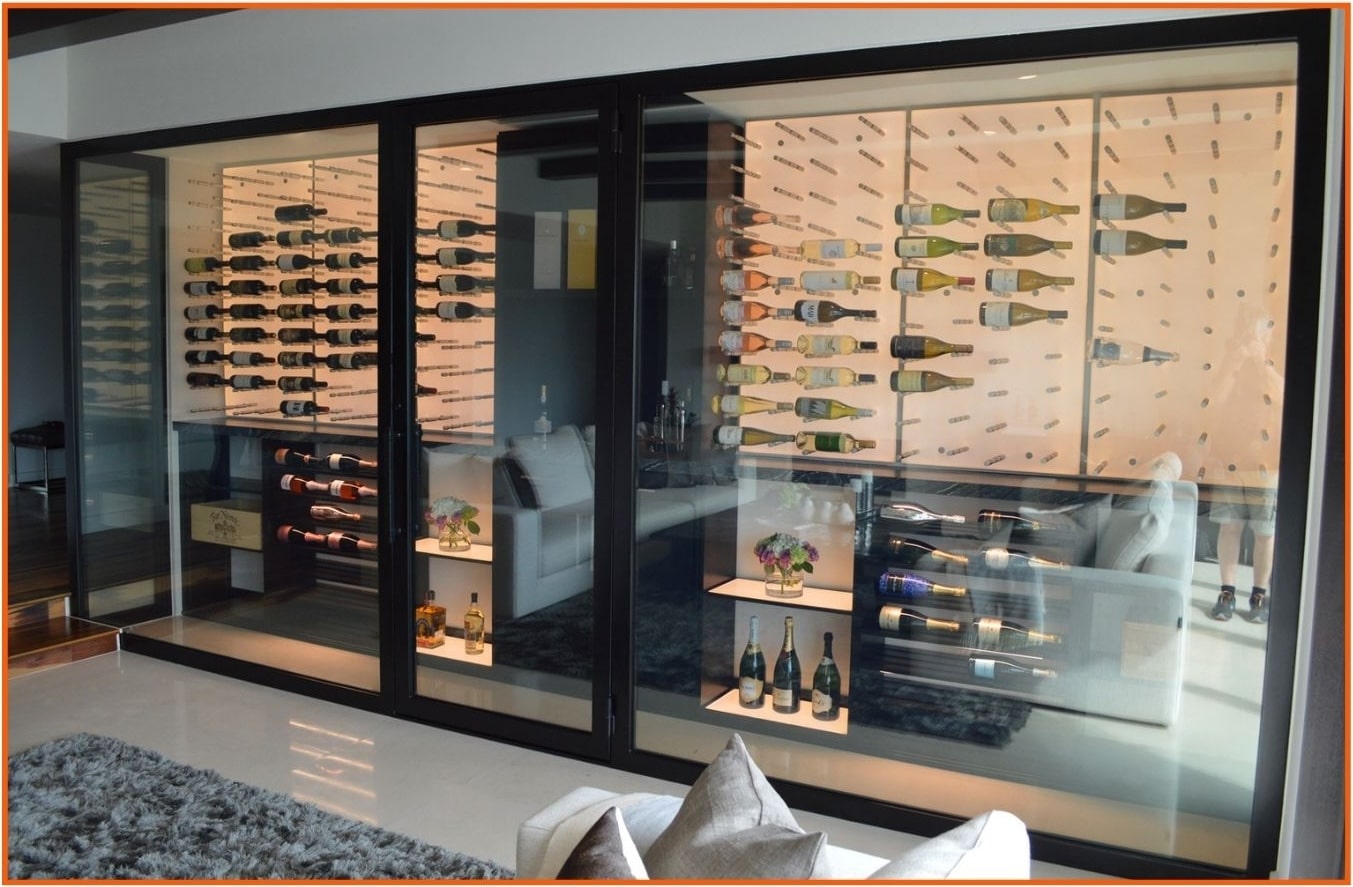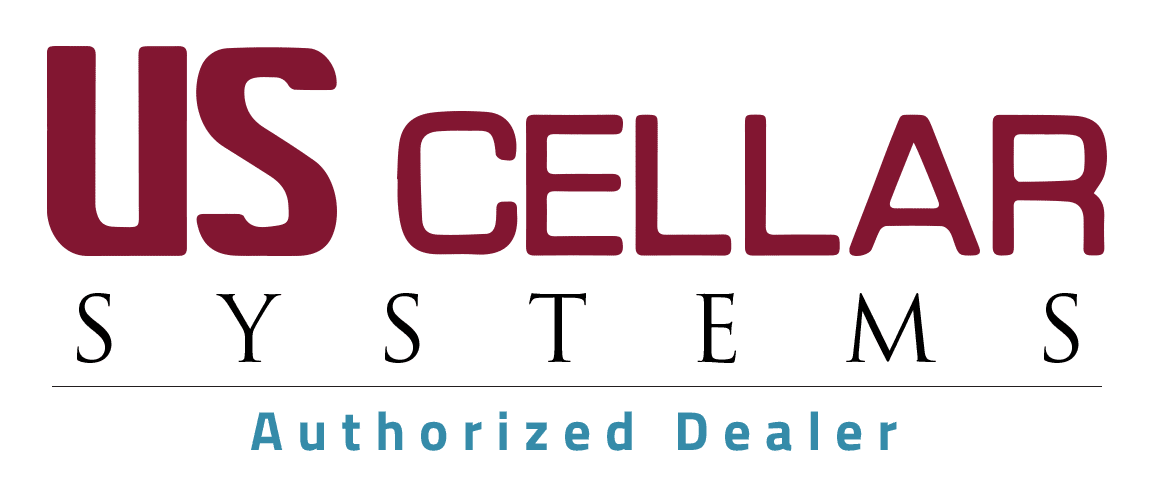Ever wonder what subtly differentiates wine cellars from other wine cellars that truly makes one a statement? Light. It’s that one element that you may not particularly notice in any wine storage, but plays a huge role in stirring your interest.
Wines and Tannins
If you’re learning about the interplay between wines and lights for your upcoming wine cellar project, one of the things you need to understand is the presence of tannins in wines and how they affect the overall quality of your drink.

Wine tannins are chemical compounds that are naturally present in wines. When they exist at the right proportions, your wine will taste and smell as perfectly as it should.
The goal of a wine cellar, then, is to keep these tannins stable and preserve the quality of your wine.
A lot of factors can alter the structure of these compounds. Temperature is one; oxygen is another; vibrations; and the last one is wine cellar lighting. In this article, you’ll be learning about the role of lights inside the cellar and how best to use them to your advantage!
Does Light Affect Wine?
Tannins develop in grapes even before they are extracted and processed into wine. The number of tannins is affected by the degree of the grape’s exposure to natural light. Simply put, the greater the sunlight, the more tannins produced.
This phenomenon continues even when the wines are already contained in bottles and ready for consumption. Any kind of lighting will affect wine to some degree, but there are many ways to mitigate its effects!
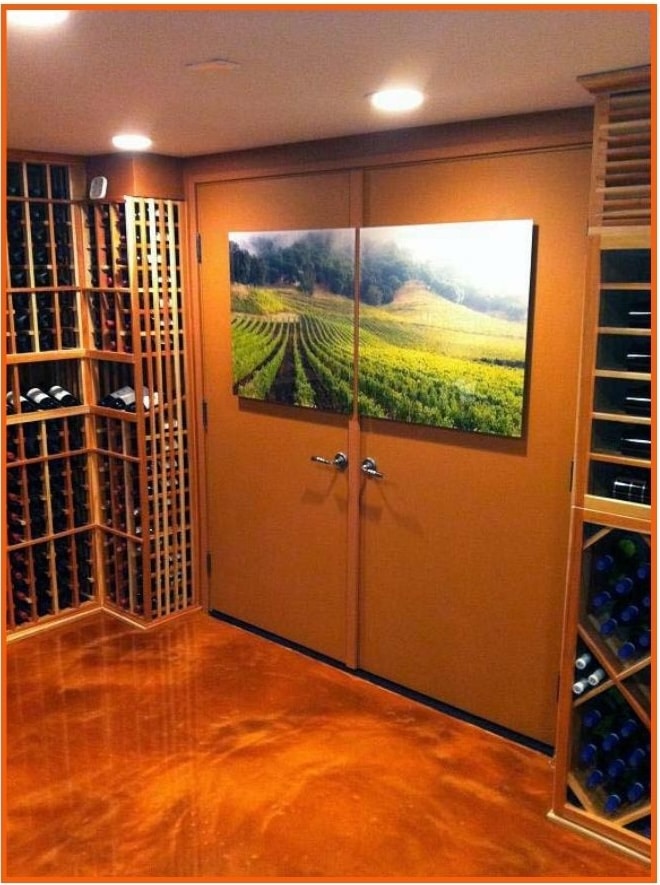
Ways That Wine Cellar Lighting Affects Wine
So why is it essential to keep tannins at bay and not over or under?
When the structure or clusters of tannins are rapidly increased in a certain volume of wine, the wine itself matures/ages faster. When this happens, a lot of wines change, and their taste, smell, and texture aren’t as good anymore. Some wines even develop funky odors!
But of course, the rate of this happening varies per type of wine. Some wines “expire” longer than others. This is why wine cellars should be kept in the right conditions 24/7, 365 days a year.
What Lights Should You Use/Avoid?
Tannins are sensitive to natural light, fluorescent, and ultraviolet light. The rate at which changes are observed will also depend on the type of wine, the intensity of the light, the distance of the wine to the light source, and how long the wine was exposed.
This is where a good wine cellar lighting plan comes in, as well as the importance of working with wine cellar light professionals like Custom Wine Cellars San Francisco!
Do Wine Bottles Help Shield Light?
Have you ever entered a chemistry laboratory and seen dark-colored bottles of all shapes and sizes? Those are called amber bottles, and they are used to store light-reactive liquids. The amber tint shields the liquid from UV exposure, keeping what’s inside stable.
This principle also applies to wine bottles.
Darker, tinted bottles serve a purpose, and they are mainly used for highly sensitive varieties of wines.
What Type of Light is Best for Wine Cellars?
To eliminate the effects of light on your wines, we recommend going for LED lights. Light-emitting diodes are low heat-emitting. While
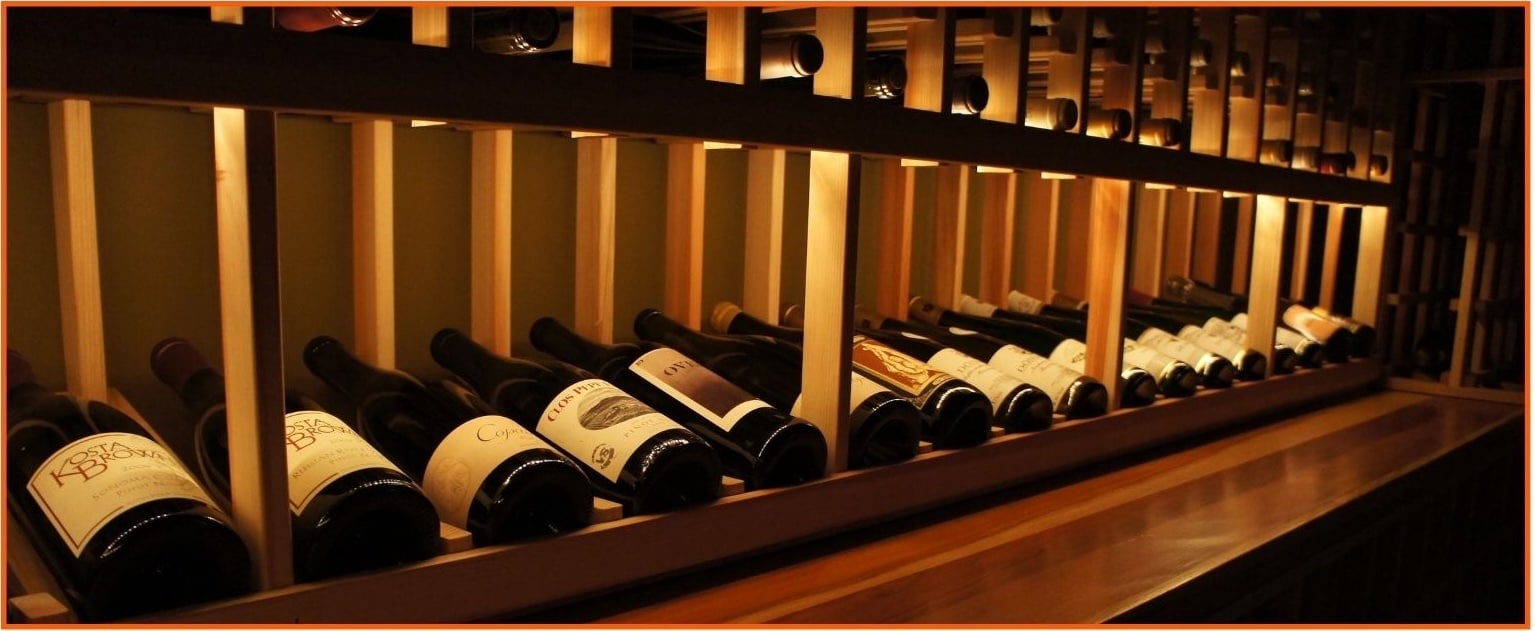
they don’t absolutely 100% keep tannins stable, they offer the least negative impact compared to natural light, fluorescent, and UV. In addition, most LED lights are dimmable. This means you can control the brightness and reduce the wine’s degree of exposure.
Wine Room Lighting Do’s and Dont’s
Lighting plays a vital role in wine cellars as they set the mood in the room. Dimmed, warm lights can instantly make your wine cellar feel cozy, while strategically placed lights can put more focus on the bottles you are most proud of.
When planning for your wine cellar lighting, it is important to remember these few things:
- Avoid natural light as much as possible. If you’re going for an all-glass wine cellar in a room brimming with natural light, explore glass tinting options.
- Avoid using electric fluorescents, UV, and halogen lights inside the wine room.
- Use only minimal lighting and avoid filling your storage with so much wine cabinet lighting or wine cellar lights.
- Go for low-wattage lighting.
- Turn lights off when not in use.
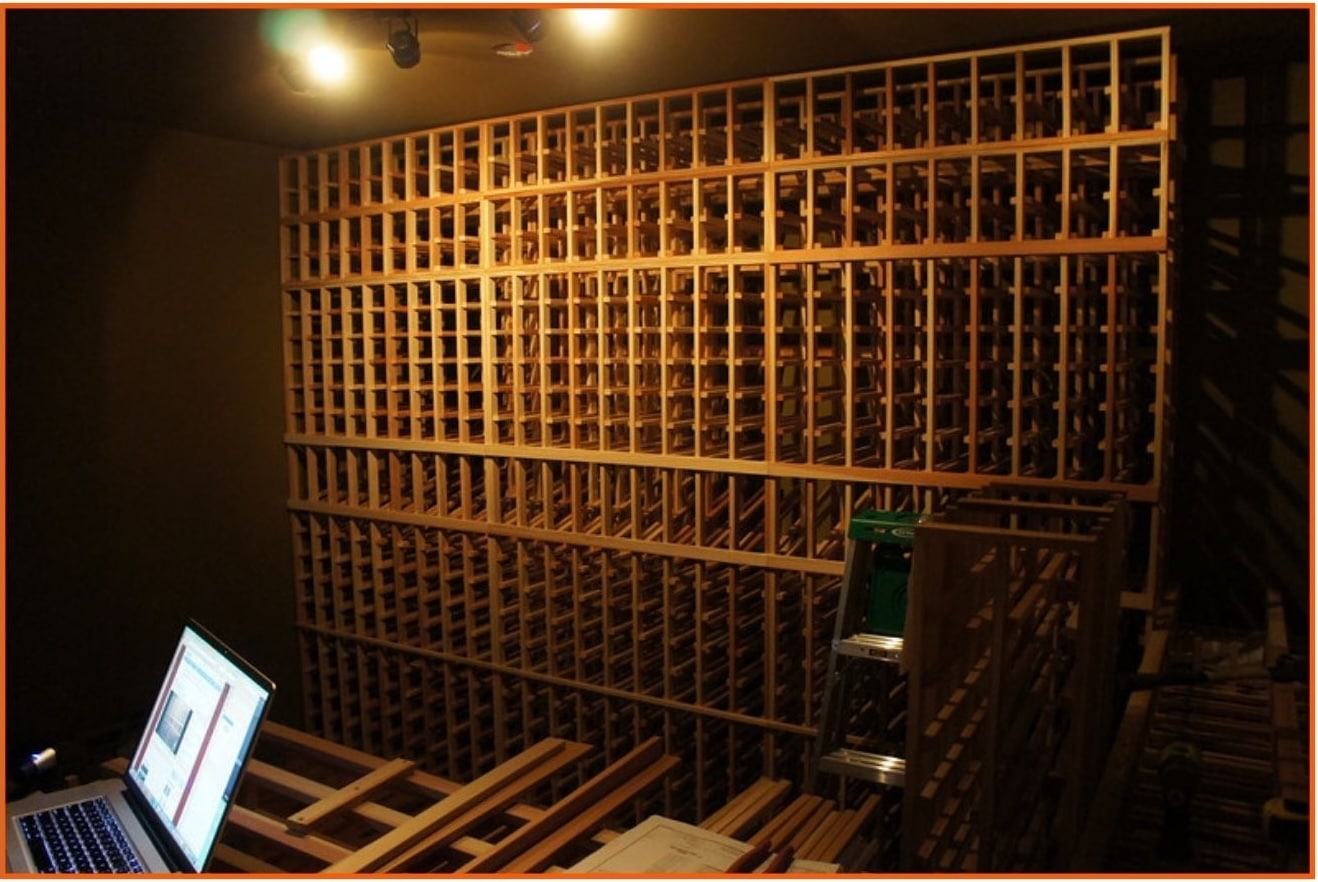
How to Achieve Lighting Balance in Your Cellar
One of the most enjoyable things about building wine cellars is you get to craft an immersive and visually stunning space. One key element that can elevate your cellar to new heights is lighting.
Achieving the perfect lighting balance is crucial to showcase your wine bottles while maintaining the desired ambiance.
Lay Out the Basic Wine Cellar Lighting
You can start by establishing a foundation of ambient lighting. This serves as the primary source of illumination in the cellar. Opt for warm, dimmable LED lights that create a cozy and inviting atmosphere, usually can or recessed lights on the ceiling. Depending on the size of your storage, place just one or a few fixtures, evenly distribute them and strategically position them in areas where they don’t hit the bottles directly.
Definitely Use Accent Lighting
Accent lighting is a powerful tool to draw attention to specific areas or features within your wine cellar. Spotlights or track lighting are excellent at establishing focal points, and highlighting architectural details, artwork, or unique wine displays. Additionally, accent lights help create depth within the room.
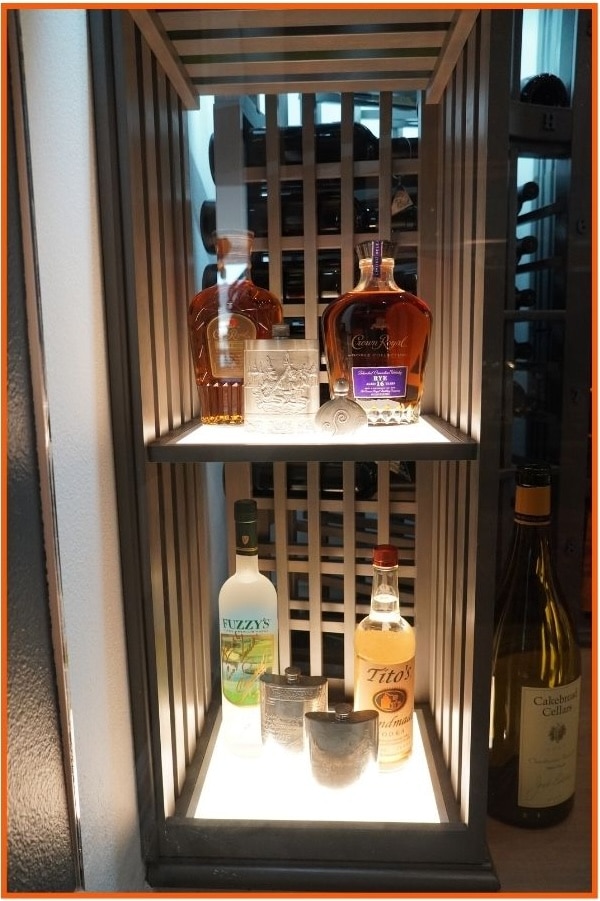
Remember to balance the intensity of these lights and ensure they complement other light fixtures when turned on. This maintains the ambiance and protects the space from feeling too overwhelming.
Showcase with Backlighting and Wine Rack Lighting
Backlighting is an effective technique to add depth to your display, too. Install LED strip lights behind backer boards or beneath high reveal rows, attach discreet puck lights behind wine racks, or use acrylic LED panels as walls to create a captivating visual effect. These backlights create a gentle glow behind the bottles, accentuating their contours and enhancing the overall aesthetic appeal.
Wine racks with lights also have a very gravitating glow, inviting people to see the bottles. Incorporating light within the racks allows people to read the labels and recognize the wines easily.
Since the lights are nearer to the bottles in these cases, remember to keep them at very low intensities to avoid damage to the wine.
Lighting Controls are King
Lighting controls are beneficial in achieving the perfect lighting balance. Smart lighting systems or dimmer switches let you adjust the brightness and intensity of the lights. This allows you to create various ambiances, adjust to different occasions, and save energy from using lights you don’t need now.
Get Incredible Wine Cellar Lighting Ideas from the Pros!
Crafting the perfect wine cellar lighting balance is a creative endeavor requiring careful consideration. By combining ambient lighting, accent lighting, backlighting, and wine rack lighting, you can create a captivating and visually pleasing space.
If you need assistance creating a full plan for your wine cellar, from wine room lighting to cooling, racking, flooring, insulation, doors, and more, don’t hesitate to contact Custom Wine Cellars San Francisco! We’d love to hear your vision and help it come to life! You can reach us at +1 (415) 508 – 8419.
